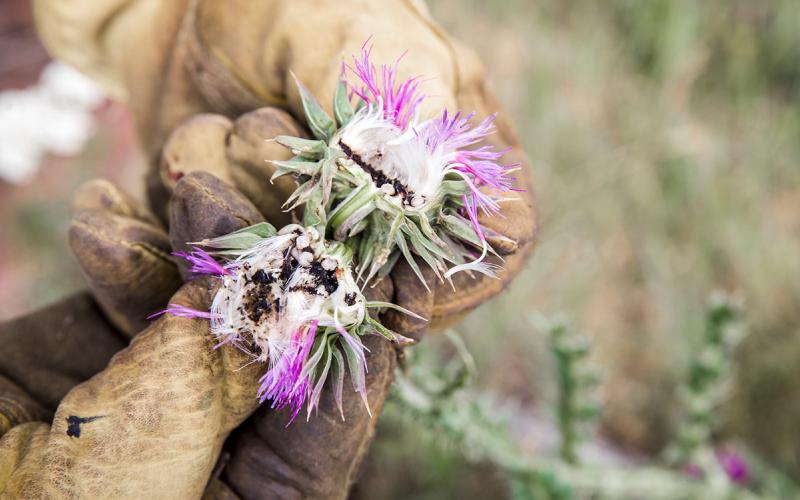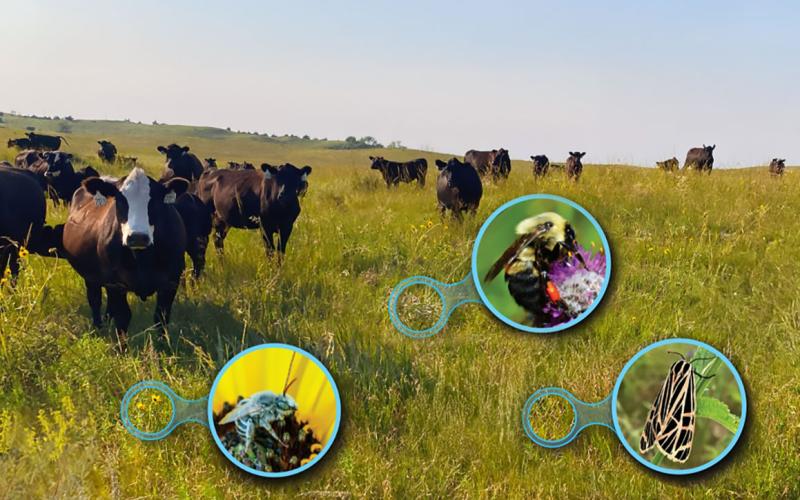Written collaboratively by Adam Varenhorst, Philip Rozeboom, Patrick Wagner, and Brad McManus.
Originally Submitted: June 26, 2023
As drought conditions in South Dakota increase, the risk of grasshopper issues in those areas also increases (Figure 1). We have received numerous reports and have also observed very large populations of grasshopper nymphs throughout much of eastern South Dakota in June.
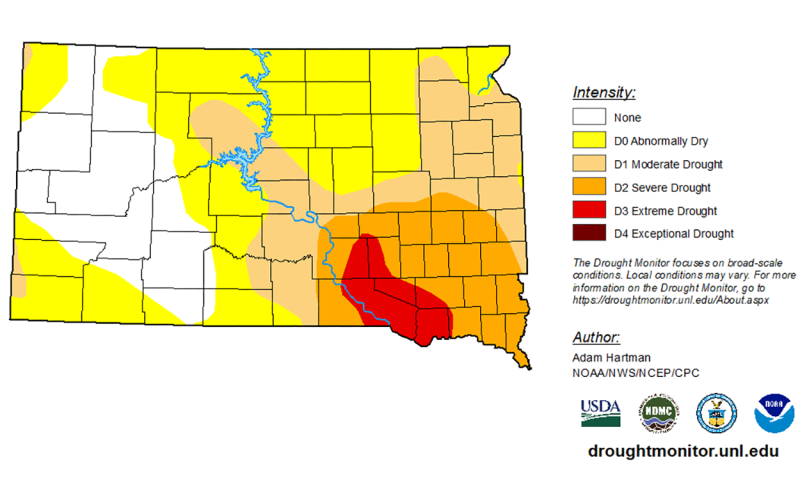
Although our recent observations are that most of these populations are still in their developmental stages, current weather conditions may decrease the time it takes the grasshoppers to reach their adult stage. The most-observed pest species typically take 40 to 60 days after hatching to reach their adult stage. However, when temperatures remain at or around 85 degrees Fahrenheit, they can reach adulthood in approximately 30 days.
Before management action is taken, it is important to determine what stage the observed grasshoppers are at. Grasshopper nymphs are generally much easier to manage and can also be treated with insect growth regulators to arrest their development. However, these products do not affect grasshopper adults. Grasshopper adults also require higher rates of insecticide for effective management.
Grasshopper Stages
Nymphs
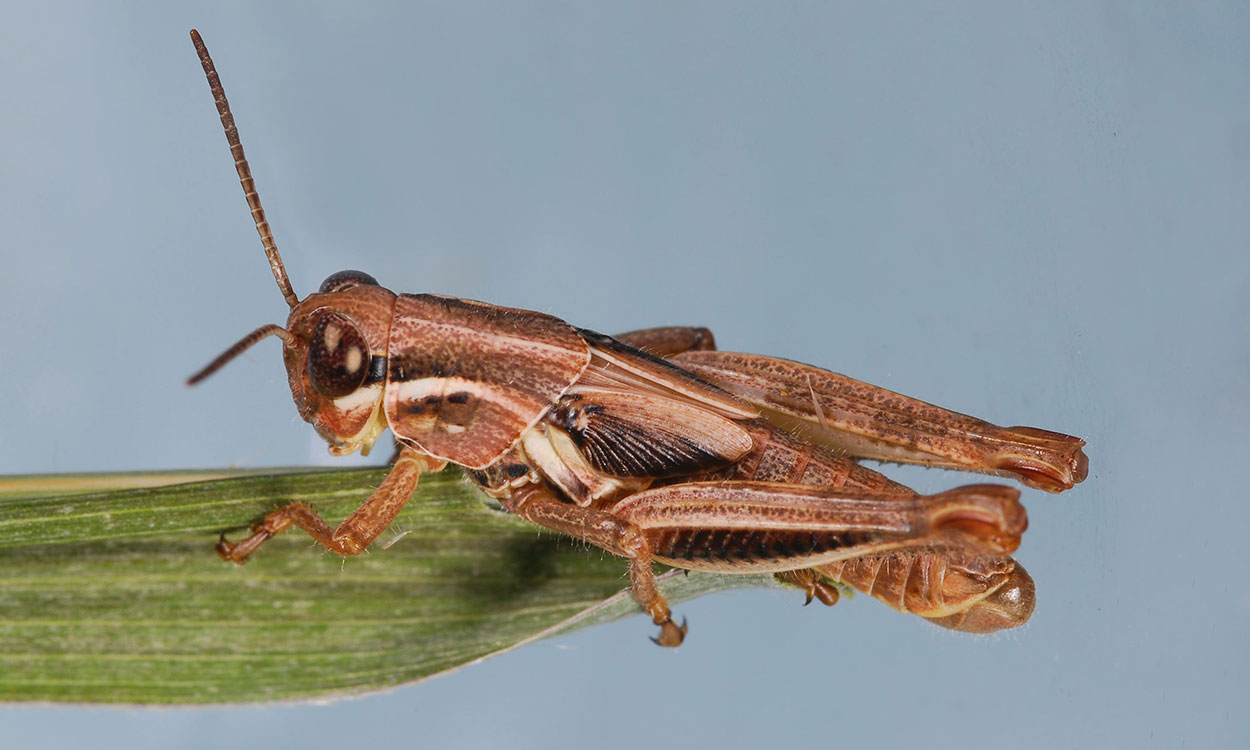
Grasshopper nymphs will vary in size and will have wing pads (incomplete wings) (Figure 2). The coloration of the grasshopper nymphs will also vary from their adult stages.
Adults
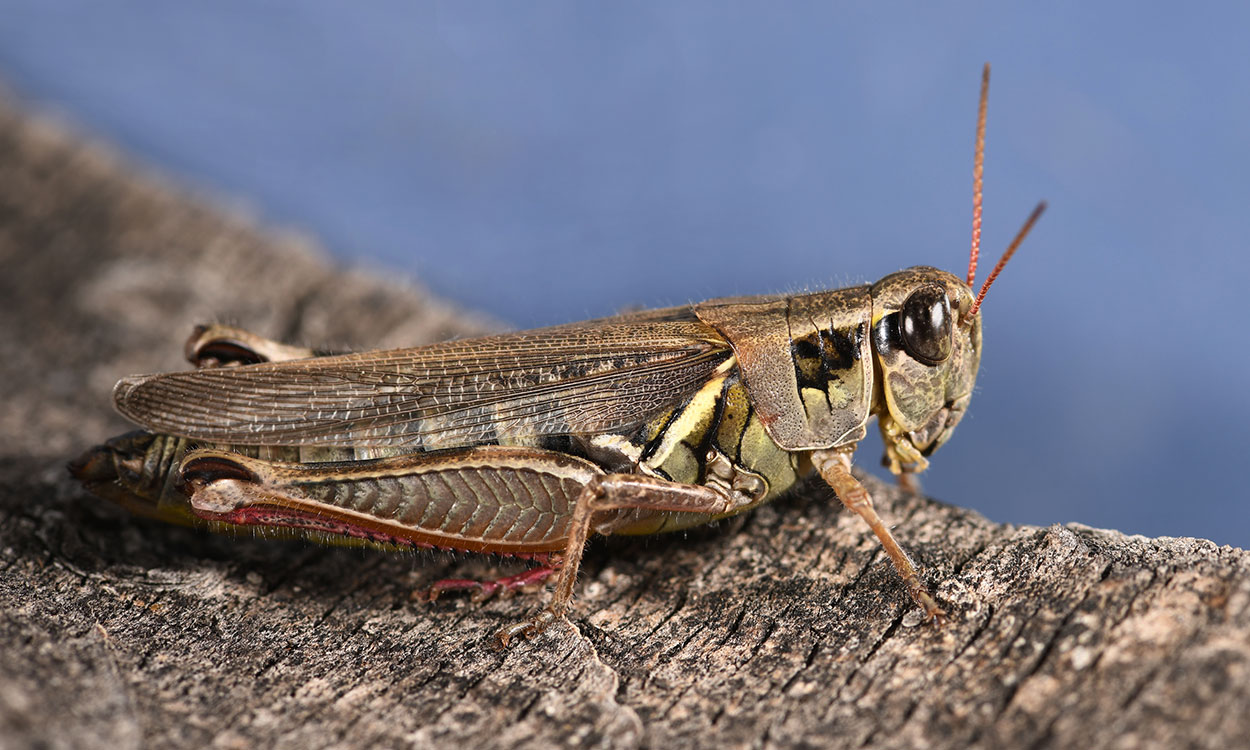
In contrast, the adult grasshoppers will be larger and have complete wings that nearly reach or extend beyond the end of the abdomen depending on gender and species (Figure 3). The adult grasshoppers will also have the coloration and markings that are used for identification.
Management Recommendations
For scouting recommendations and grasshopper thresholds please view our article, Large Grasshopper Populations Detected in South Dakota.
